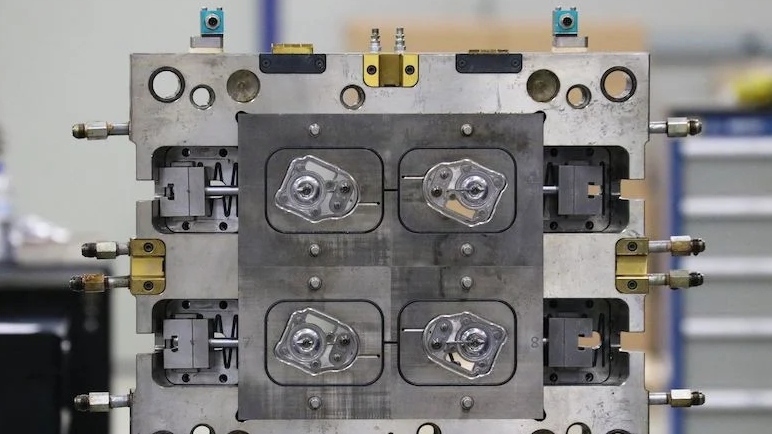
Injection molding molds, also known as dies or tooling, are crucial components in the injection molding process. The choice of material for molds significantly impacts the quality, durability, and cost of the final product. Here are the primary materials used for making injection molding molds:
1. Steel
Steel is the most common material used for injection molds due to its durability and strength.
- P20 Steel:
- Characteristics: Pre-hardened, medium carbon, low-alloy steel.
- Applications: Suitable for moderate production runs, offering good machinability and polishability.
- Advantages: Cost-effective, durable, and relatively easy to work with.
- H13 Steel:
- Characteristics: Chromium hot-work steel.
- Applications: Used for high-volume production and high-temperature applications.
- Advantages: Excellent toughness, thermal stability, and resistance to wear and cracking.
- Stainless Steel:
- Characteristics: Corrosion-resistant steel.
- Applications: Ideal for medical, food, and high-humidity environments.
- Advantages: Corrosion resistance, good mechanical properties, and ease of cleaning.
2. Aluminum
Aluminum molds are used for lower volume production and prototype development.
- 7075 Aluminum:
- Characteristics: High-strength aluminum alloy.
- Applications: Prototyping and low to medium-volume production runs.
- Advantages: Lightweight, excellent machinability, and good thermal conductivity.
- QC-10 Aluminum:
- Characteristics: High-strength, high-hardness aluminum.
- Applications: Higher volume production than standard aluminum molds.
- Advantages: Comparable strength to steel molds with reduced weight and cost.
3. Beryllium-Copper Alloy
This alloy is used for specific applications requiring excellent thermal conductivity.
- Characteristics: Combines copper’s thermal conductivity with beryllium’s strength.
- Applications: Used in areas of the mold requiring rapid heat removal, such as cores and inserts.
- Advantages: Excellent thermal conductivity, reducing cycle times and improving part quality.
[elementor-template id=”4330″]
4. Tooling Inserts and Coatings
Molds can also include inserts made from different materials to enhance specific properties or prolong mold life.
- Ceramic Inserts:
- Characteristics: High wear resistance and thermal stability.
- Applications: High-wear areas to extend mold life.
- Advantages: Enhanced durability and performance in high-temperature environments.
- Coatings:
- Types: PVD (Physical Vapor Deposition) coatings, TiN (Titanium Nitride), and DLC (Diamond-Like Carbon).
- Applications: Applied to steel molds to improve wear resistance, reduce friction, and prevent corrosion.
- Advantages: Increased mold longevity and improved part ejection.
Conclusion
The selection of mold material depends on various factors, including the production volume, part complexity, material being molded, and budget. Steel molds are the go-to choice for high-volume production due to their durability, while aluminum molds are preferred for prototyping and low-volume runs due to their cost-effectiveness and ease of machining. Beryllium-copper alloys and specialized inserts enhance mold performance in specific applications, ensuring high-quality and efficient production.
Related Conten: https://www.m-dtg.com/service/plastic-injection-molding/
 DTG Mould Trade Process |
|
| Quote: | According to sample, drawing and specific requirement. |
|---|---|
| Discussion | Mold material, cavity number, price, runner, payment, etc. |
| S/C Signature | Approval for all the items. |
| Advance | Pay 50% by T/T |
| Product Design Checking | We check the product design. If some position is not perfect, or can not be done on the mould, we will send customer the report. |
| Mold Processing | Send report to customer once each week |
| Mold Testing | Send trial samples and try-out report to customer for confirmation |
| Mold Modification | According to customer’s feedback. |
| Balance Settlement | 50% by T/T after the customer approved the trial sample and mould quality. |
| Delivery | Delivery by sea or air. The forwarder can be designated by your side. |
 |
|

